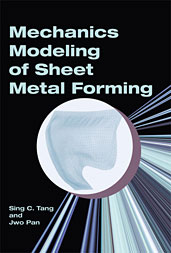Technical Paper
Automotive Vehicle Body Temperature Prediction in a Paint Oven
2014-04-01
2014-01-0644
Automotive vehicle body electrophoretic (e-coat) and paint application has a high degree of complexity and expense in vehicle assembly. These steps involve coating and painting the vehicle body. Each step has multiple coatings and a curing process of the body in an oven. Two types of heating methods, radiation and convection, are used in the ovens to cure coatings and paints during the process. During heating stage in the oven, the vehicle body has large thermal stresses due to thermal expansion. These stresses may cause permanent deformation and weld/joint failure. Body panel deformation and joint failure can be predicted by using structural analysis with component surface temperature distribution. The prediction will avoid late and costly changes to the vehicle design. The temperature profiles on the vehicle components are the key boundary conditions used to perform structure analysis.




